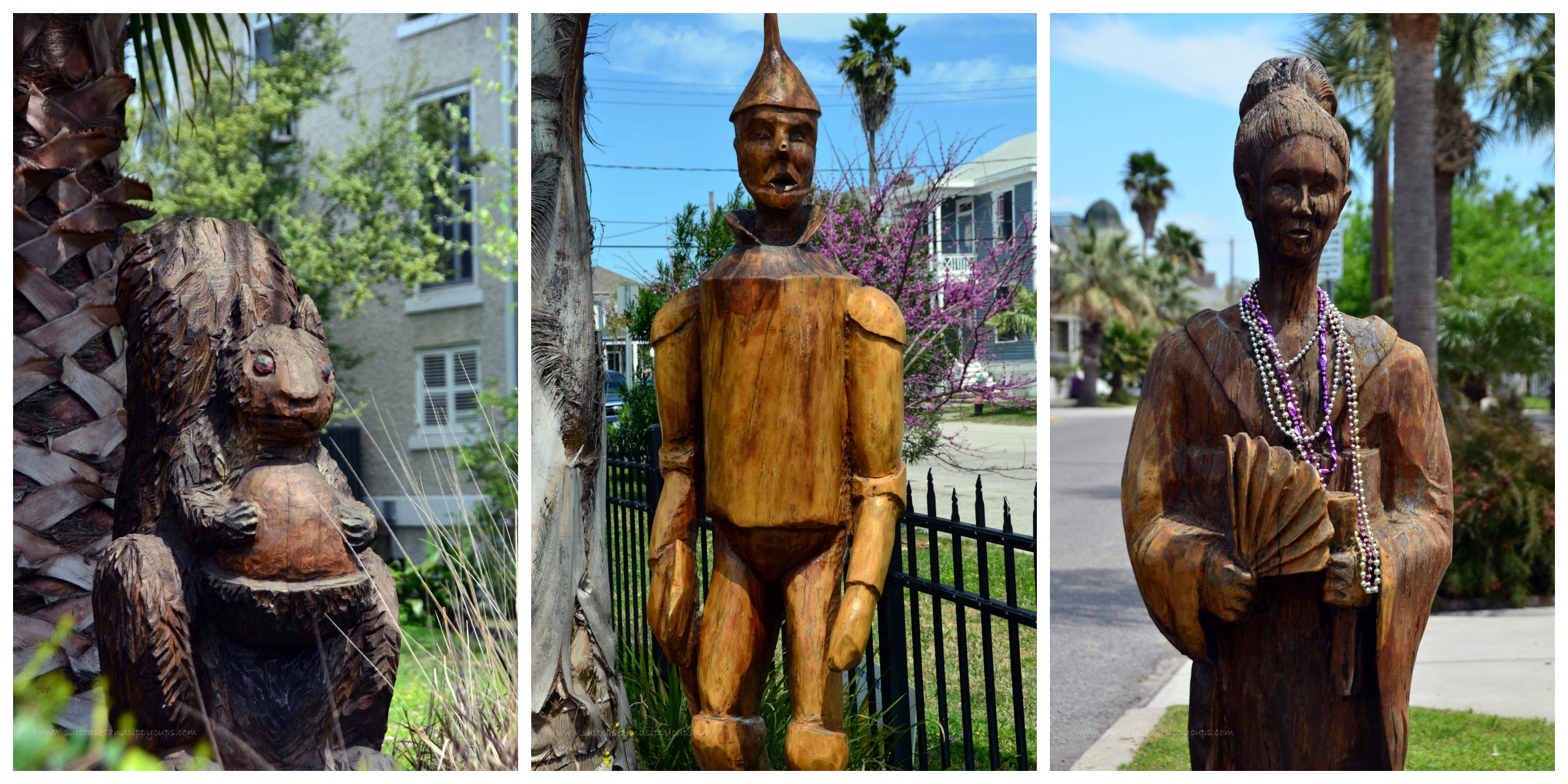 By Terry Card
By Terry Card
Snuggled within a tranquil scene of pure white pelicans sunning themselves on the rocks protecting the working fishing and charter boats harbored at Pier 19, is the Ocean Star Oil Rig & Museum. The scene, worthy of an artist’s brush, camouflages the dynamism of an American global industry that the Ocean Star Oil Rig & Museum represents.
 The oil and gas industry is on the cusp of leading America to energy independence. Why is this so important? Because America today is under attack from terrorist, socialist, and communist nations upon which we unfortunately depend on for about half of our oil supply. They, therefore, have the power to annihilate our transportation and industrial systems and shut down our power grid – all of which we rely on for food, water, jobs, and transportation of goods, people, and material.
The oil and gas industry is on the cusp of leading America to energy independence. Why is this so important? Because America today is under attack from terrorist, socialist, and communist nations upon which we unfortunately depend on for about half of our oil supply. They, therefore, have the power to annihilate our transportation and industrial systems and shut down our power grid – all of which we rely on for food, water, jobs, and transportation of goods, people, and material.
Since approximately two-thirds of the world is covered in water, it makes sense that much of the world supply of oil and gas are found beneath the oceans. This means that the modern oil rigs represented by the Ocean Star Oil Rig are extremely important in helping make America energy independent.
The museum itself gives valuable insight into the offshore drilling industry. It is a fascinating combination of graphics and accompanying information, combined with real life displays over three levels, that clearly demonstrate how oil rigs operate, and the conditions that dictate the types of rigs used. And, there is the rig itself, which allows the visitor to discover how rigs function, the type of equipment utilized, the people that crew these rigs, how they are accommodated and fed and the myriad of products produced from oil, including gasoline, lubricants, plastics, wax, rubber, and power.
The Ocean Star jack up drilling rig was built in 1969 at the Bethlehem shipyard in Beaumont, Texas. It drilled about 200 wells, operating in water depths up to 175 feet. The Ocean Star was up for scrap sale when it was purchased by the Offshore Energy Center in 1995. Through the generous $3.6 million contribution of the oil and gas industry and individuals, the Ocean Star Museum was opened in April 1997. This April will be its 20th anniversary.
 Lisa Lisinicchia, who has a Marine Biology degree from TAMUG and is the Operations Director of the facility, said that prior to Ocean Star being purchased, feasibility studies explored the idea of a library or museum. It also reviewed the best locations. When the decision was made to create a museum and the Ocean Star was purchased, it was felt that Galveston would be the ideal location because of the potential for a waterfront location and the fact that it was a tourist-friendly city.
Lisa Lisinicchia, who has a Marine Biology degree from TAMUG and is the Operations Director of the facility, said that prior to Ocean Star being purchased, feasibility studies explored the idea of a library or museum. It also reviewed the best locations. When the decision was made to create a museum and the Ocean Star was purchased, it was felt that Galveston would be the ideal location because of the potential for a waterfront location and the fact that it was a tourist-friendly city.
Entry to the museum is through the gift shop. After walking along an elevated walkway overlooking Pier 19, you can wander the floors of the museum on your own or with an audio information assist. The first level is dedicated to the search for oil through seismic exploration. It also provides access to the pipe deck through an exterior door. This gives a visitor an opportunity to read about and see the equipment used on the rig during exploration operations. The jack up rigs like the Ocean Star, were used primarily for exploration drilling.
 Once oil was found, then the oil company would move the jack up rig away and replace it with a permanent production rig. Drilling pipe is stored on the Pipe Deck, which also features a mobile laboratory used for lowering instruments into the hole to log the rock formations. There is also an escape capsule, mud logging controls, a blowout preventer, a hyperbaric chamber in case a diver gets the bends, various other equipment, and a “Billy Pugh” personnel basket used to transport workers from a boat to the platform. As the pitching boat makes a pass, the workers have only a few seconds to toss their bags into the basket before they leap on, holding onto the outside of the basket while it is hoisted 100-feet into the air. Definitely not for the faint of heart!
Once oil was found, then the oil company would move the jack up rig away and replace it with a permanent production rig. Drilling pipe is stored on the Pipe Deck, which also features a mobile laboratory used for lowering instruments into the hole to log the rock formations. There is also an escape capsule, mud logging controls, a blowout preventer, a hyperbaric chamber in case a diver gets the bends, various other equipment, and a “Billy Pugh” personnel basket used to transport workers from a boat to the platform. As the pitching boat makes a pass, the workers have only a few seconds to toss their bags into the basket before they leap on, holding onto the outside of the basket while it is hoisted 100-feet into the air. Definitely not for the faint of heart!
The second level has models and graphics that explain the modern drill rigs and the differing situations in which particular production drill rigs are used. Shell’s Bullwinkle Jacket Platform is 1,751 feet tall – taller than the Empire State building at 1,453 feet. Water depth becomes the determining factor for the type of production vehicles used. Floating Production and Storage drilling vessels can operate to a depth of 7,000 feet. The drilling operation is conducted from a mid-ship derrick that lowers the drill pipe through a hole called a moonpool, in the center of the hull. Devil’s Tower Spar is a floating 877-foot tall platform held in place by guy wires anchored to the seabed 6,000 feet below. The 330-foot tall Brutus tension leg platform operates in 4,000 feet of water. Most often, drilling production is a complex operation. There can be well heads on the sea bed, connected by pipelines operated by remote control from floating production and storage vessels. These pipelines are serviced by pigs that pass through them to clean and effect repairs.
The third level provides information on transportation, safety, life on a rig, and access to the drill floor via a skyway over the entire drill platform. The various vessels required for oil drilling operations include semi-submersible heavy lift vessels, which can even transport jack up rigs. There are also tankers, tugboats, crane barges, and supply vessels.
 A very interesting display features life on a rig showing where workers sleep, eat, and play. Facilities like pool tables, workout gyms, and movies are provided for free time. Feeding everyone in a modern cafeteria setting may require the purchase and preparation of 1,600 pounds of meat and seafood, 250 pounds of potatoes, 60 pounds of tomatoes, 80 gallons of milk, and 35 pounds of coffee per week.
A very interesting display features life on a rig showing where workers sleep, eat, and play. Facilities like pool tables, workout gyms, and movies are provided for free time. Feeding everyone in a modern cafeteria setting may require the purchase and preparation of 1,600 pounds of meat and seafood, 250 pounds of potatoes, 60 pounds of tomatoes, 80 gallons of milk, and 35 pounds of coffee per week.
The drill floor is where all the action takes place. Equipment for lifting and locking the pipe and doing the drilling is found on this level. Exhibitions of drill bits, power tongs, the driller’s console, and the helicopter landing pad can be viewed with accompanying descriptions and explanations.
It is surprising that the costs of many of the products of the oil industry, like gasoline at $2.25/gallon, are so cheap in comparison to the cost of exploration and development. Deep water fields run between $500 million and $1 billion to develop the world over including the Gulf of Mexico.
 Aside from the cost of leasing offshore drilling sites from the Federal government, the daily rental cost that oil companies have to outlay to other specialty companies for provision and operation include $429,000 for a drill ship, $115,000 for a drill barge, $171,000 for a jack up rig, $369,000 for a semi-submersible vessel, and even $24,900 for a tugboat.
Aside from the cost of leasing offshore drilling sites from the Federal government, the daily rental cost that oil companies have to outlay to other specialty companies for provision and operation include $429,000 for a drill ship, $115,000 for a drill barge, $171,000 for a jack up rig, $369,000 for a semi-submersible vessel, and even $24,900 for a tugboat.
There are 27,000 miles of oil/gas pipeline in the Gulf of Mexico alone, which transports 200 million barrels of oil and 1 trillion cubic feet of gas over a six month period. This is an industry that is central to the wealth of the nation. It is no wonder that more than 42,000 people visit the Ocean Star Drill Rig and Museum each year.
Ocean Star Drill Rig and Museum is located at 20th and Harborside (Wharf Rd.) It is open daily 10am-5pm. Admission is $9 for adults, $6 for seniors, $5 for youth (7 to 18), and free for under 6. For more info call (409)766-7827 or go to oceanstaroec.com.



























